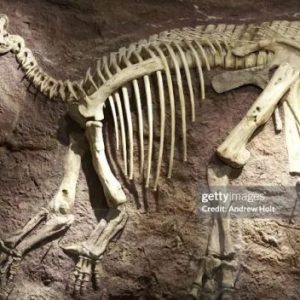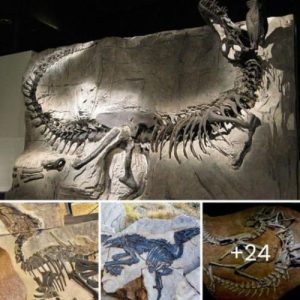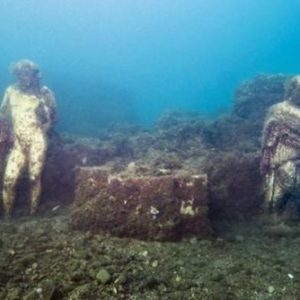In the vast and enigmatic landscape of the south-central Sahara, a remarkable secret lies buried beneath layers of sand – 20 tons of dinosaur bones. This extraordinary discovery has unveiled a hidden world that was once home to magnificent creatures that roamed the Earth millions of years ago. In this article, we will delve into the fascinating story of these ancient giants, the significance of this find, and the ongoing efforts to study and preserve this remarkable piece of Earth’s history.
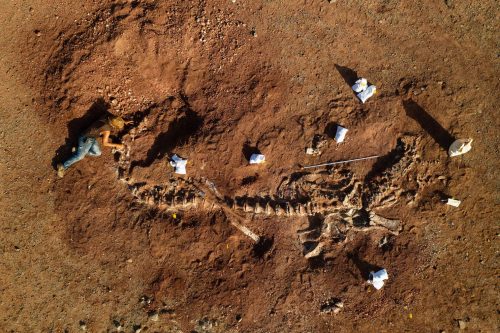
A Prehistoric Treasure Trove
The south-central Sahara, a region encompassing parts of Niger, has long been associated with an arid and desolate landscape. However, beneath the seemingly lifeless terrain, lies a prehistoric treasure trove that is rewriting our understanding of Earth’s history. Fossils of dinosaurs, which lived during the Cretaceous period around 100 million years ago, have been found here in abundance.
The discovery of 20 tons of dinosaur bones in this remote and unforgiving terrain has sparked global interest and excitement among paleontologists, geologists, and scientists alike. The fossils belong to a wide array of dinosaur species, offering a unique opportunity to piece together the puzzle of what life was like during the Cretaceous period.
Unveiling Earth’s History
The Cretaceous period, known for its diverse and colossal reptilian inhabitants, was a time when Earth’s ecosystems were dramatically different from what we see today. The Sahara, which now appears barren, was a lush, tropical region teeming with life. The presence of dinosaur fossils in the south-central Sahara suggests that this area was once a thriving ecosystem with abundant food sources and water.
By studying these dinosaur bones, scientists can gain valuable insights into the lives and behaviors of these ancient creatures. These fossils provide crucial information about their physical characteristics, diets, and interactions with the environment. Such knowledge allows us to reconstruct the ecosystems of the past and understand how they compare to our modern world.
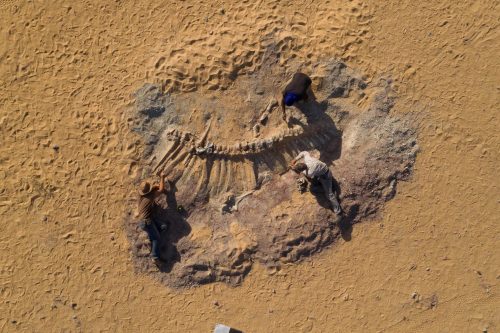
Scientific Significance
The discovery of 20 tons of dinosaur bones is not only a remarkable feat but also a treasure trove of scientific knowledge. These fossils offer a unique opportunity to expand our understanding of Earth’s geological and biological history. Some key scientific implications of this discovery include:
Species Diversity: The fossils from the south-central Sahara represent a broad range of dinosaur species, shedding light on the diversity of life during the Cretaceous period. Understanding the coexistence of various species in a single ecosystem is crucial for reconstructing the ancient environment.
Evolutionary Insights: The well-preserved nature of these fossils allows scientists to study the evolution of dinosaurs more comprehensively. By examining changes in anatomy and adaptations over time, researchers can gain a deeper understanding of the evolutionary processes that shaped these creatures.
Climate and Ecosystem Changes: The fossils also provide evidence of the changing climate and landscape of the Sahara over millions of years. This information is invaluable for understanding how the environment has evolved and the factors that led to these changes.
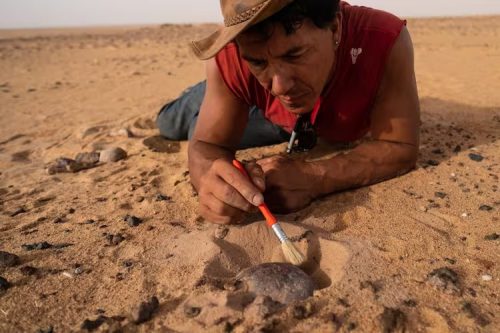
Conservation Efforts: Discoveries like this highlight the importance of preserving Earth’s natural history. Conservation efforts are crucial to protect such invaluable fossils, ensuring that future generations can continue to learn from them.
Challenges and Ongoing Research
While the discovery of these dinosaur bones is undoubtedly exciting, it also presents significant challenges. The remote location of the fossils, coupled with the harsh conditions of the Sahara, makes excavation and preservation a demanding task. Scientists and researchers face numerous logistical and environmental obstacles in their quest to uncover the secrets hidden beneath the sand.
Efforts to excavate and study the fossils are ongoing, with international collaboration playing a vital role. The hope is that this remarkable find will continue to yield insights into Earth’s ancient history for years to come. It is essential to ensure the long-term preservation of these fossils, both for scientific research and as a testament to the Earth’s awe-inspiring past.
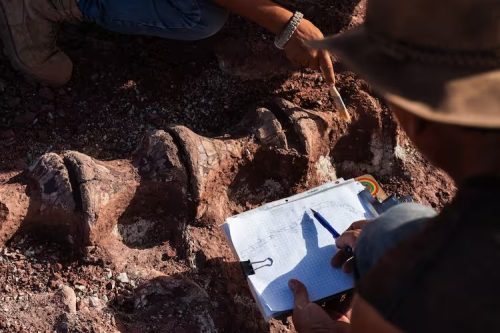
The discovery of 20 tons of dinosaur bones in the south-central Sahara has opened a window into Earth’s distant past, unveiling the secrets of a lost world. These fossils provide an invaluable opportunity for scientists to expand their knowledge of prehistoric life, ecosystems, and evolution. As research continues and conservation efforts progress, the south-central Sahara will remain a place of wonder and scientific discovery, reminding us of the vast mysteries that lie hidden beneath the Earth’s surface.


